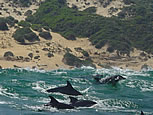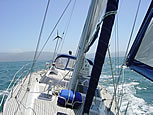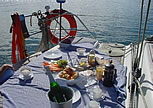![]()
Travel Photography

Vacationtechnician personalized luxury adventure travel transports you to the most exquisite wilderness and chill out retreats on Earth. Conserving rare biodiversity through low volume tourism; our aim is your indulgence -at no one's expense. Plan now to be assured a rejuvenating escape at a restful pace -to an unspoilt gem in the purest sense.
![]() Botswana
Safari Field Reports
Botswana
Safari Field Reports
![]() Meet our expert Safari Guides
Meet our expert Safari Guides
" best guides = best safaris ~ a bad guide in the best camp will ruin your safari."
For Better Pictures:
Seek unexpected views, times, and angles. For an unfamiliar shot of the Taj Mahal, you could go to nearby Agra Fort and frame the image through a carved stone window. To photograph England's ancient Stonehenge, go at a significant time - perhaps with a full moon rising, to suggest a feeling of timelessness. Rather than shoot Disneyland's Cinderella castle at noon, wait for sunset, when tower pennants flying against a golden sky lend a fairy-tale atmosphere of romance. In Venice, forget the trite photo of pigeons in St. Mark's Square; instead, climb the clock tower and focus on the statue of the bell-ringer, which seems to float above the domed roofs of the city.
Use different lenses. Wide-angle and telephoto lenses can entirely alter the look of a scene. A wide-angle skews the perspective so that nearby things appear larger and closer, while more distant things look oddly smaller and farther away. Through a telephoto, objects at successive distances appear nearer to each other -- a useful feature when you want to "stack" repeated design elements, such as Victorian houses on a city block in San Francisco.
Find the good in bad weather. A wash of rain adds an appealing glisten to almost any subject. It causes bright colors (reds, yellows, blues) to "pop" from their drab surroundings and makes everyday scenes resemble paintings.
Observe the ways people adapt to wet weather. A Paris street becomes a gleaming river of umbrellas. During the Asian monsoon, people sit at home with water up to their waists, as if nothing unusual were going on.
Clear the area. To photograph popular tourist sights without tourists in them, arrive at sunrise, before other people show up. (A word of caution: If the light is behind you, be sure your own shadow doesn't creep into the picture!)
If there are crowds when you visit, try screening off other tourists behind something, such as a massive stone block below the Parthenon.
The technically minded can try putting the camera on a support, using a small lens aperture and a neutral dark gray filter (2.0), and exposing for several seconds. Passing people will just be faint blurs.
Go far away. When shooting an overall view, try to put a lot of distance between you and the cathedral. Photos can show the way a structure dominates its surroundings, as well as showing its architectural components. Some buildings are illuminated at night, creating a dramatic effect. (Be sure to bracket long night exposures, to minimize the risks of underexposure and overexposure.)
Walk around. Before you take out a camera, look around the building -- both inside and out. You'll absorb the spirit of the place, understand its architecture, and find details that strike you: the figure of a saint in a stained glass window, a gargoyle crouched atop a wall. Sometimes one small thing will mean more to you than the whole building.
Shoot interiors in late morning. An hour or two before midday, strong light slants through doors and windows. It may glint off a fixture, or descend in luminous shafts through dust suspended in the air.
Capturing the spirit of sacred spaces. Because many stained glass windows are located above eye-level, their proportions get distorted if you try an overall shot from the floor. It's better to shoot one section that you particularly like. Walk to the far side of the church and use a telephoto lens, so the detail fills the viewfinder. For the best light, shoot on an overcast day or when direct sunlight isn't hitting the window.
Plan ahead. Ask a local resident for information on the parade route and the best viewpoints. If there's time, scout beforehand.
Beat the crowd. Arrive early and get a spot up front, so you can photograph without other spectators in the way. Or find a high place with a good view. You might ask a shopkeeper or hotelier if he'd allow you to take pictures from a balcony or upstairs window. When nothing else works, hold the camera above your head, aim it toward the spectacle, and just click away, praying that at least one picture turns out. (News photographers call this technique a "Hail Mary ".) For an unusual effect, blur motion using a slow shutter speed to "smear" movement, communicating the action at a carnival, parade, or other event.
Don't forget details. Many public events are visually chaotic. Look for details to single out, such as a reveler's mask or a clown's shoes. A long lens will frame the image tightly. Using a flash can isolate a nearby subject from the busy surroundings -- for example, a feather-clad dancer in a wild carnival procession.
Keep both eyes open. Looking through both eyes, not just the lens, lets you observe when someone or something unwanted is about to enter the scene you're shooting.
Use good manners. The camera has become so ubiquitous that there's hardly anyone on earth who hasn't been harassed by someone taking photos. Instead of trying to sneak a shot of someone, walk up and ask, 'May I take your photograph?" (You can learn the appropriate phrase in any language -- French, Hindi, whatever.) Be open and friendly. Most people say "fine" -- but they do appreciate being asked. If you just race up to people, snap their picture, and walk away, they'll feel that you took advantage of them. Worse, depending on their culture, they may be angry. Respect their right not to be photographed if they so choose.
Get involved. We sometimes don't look at people on the street or get involved in other people's lives. But that's not true in many other cultures. Approach people. After all, you didn't travel so far just to be a bystander. Get caught up in people's lives. When you show interest people are flattered and respond to you.
Show people acting naturally. Photograph subjects doing something other than posing. Let's say a Spanish farmhand is pitching hay. If he's looking straight at you instead of the hay wagon, you know he's conscious of the camera. Politely ask him not to look your way, or just lower the camera until he goes back to what he was doing. When you've got a nice person who's cooperating -- a smiling babushka selling sausages at a Russian marketplace -- take a few shots so she'll get used to you. Then, when a customer comes and the woman gets animated and forgets you're there, you can take better ones. Be kind. Many people don't want to be photographed when they're sweaty, dirty, or otherwise at a bad moment.
Don't eat breakfast and dinner at the usual times. You should be outside taking pictures. That's because the best light comes in early morning and late afternoon, when the sun is low on the horizon. During these "golden hours," outdoor illumination is soft and warm, with no harsh shadows. (The ultimate is Alaska in summer, when a sunset can last three hours.)
Be patient. A good photograph sometimes means waiting until the light is right, the weather changes, or the feeling is strong.
Go back. Places are like people: After the second or third visit, you begin to know them better and start to get involved That's when exciting things happen.
Mountains. Beware the empty landscape shot. Photographed from ten miles away with a snapshot camera, a majestic mountain will look like a molehill. To add depth and dimension, frame it through trees or add something of interest in the foreground. To dramatize the height of mountains, use a telephoto lens. A wide-angle lens expands the scene and also keeps the foreground in sharp focus -- such as pebbles on the shore of an Alpine lake.
Sand and sea. On film, even a glorious beach in the south of France may look like dull sand and featureless sky. Give the eye something to focus on: the shadow of a palm tree on wet sand, people tossing a beach ball. When faced with a large expanse of ocean, include a subject of interest such as a sailboat. Or wait for changes in lighting or weather to create spectacular clouds or a glittering pathway of sunshine on the water.
Snow. Snow lends itself to several effects. Use flash to arrest falling flakes as white specks. Use a slow shutter speed (1/30 or 1/60) to render them as white streaks. To avoid streaking, choose a shutter speed of 1/125 or faster. In winter's dim light, you'll need fast film.
Rocks, cliffs. Take pictures when early morning or late afternoon sun rakes the jumbled landscape at an angle and creates sharp relief. Otherwise even the Grand Canyon may look flattened out and blah.
Stay on the edge. The margin between day and night triggers excitement in a photograph. The transition between seasons of the year lasts only a few days as time marches forward. Even a still landscape can seem full of movement. When you're shooting a Swiss meadow full of spring wildflowers, it adds an edge if there is still snow in the high mountains beyond.
Nature Reading
Cheetahs
Born to be Wild
Leatherbacks and Loggerheads
Giraffes in Africa
Rhinos in Africa
African Trees
River Horses:
Hippopotamus
Marine Marvels of Maputaland
Survival Strategies
of African Butterflies
Whale and Dolphin Watching
Great
White Sharks near Capetown, South Africa
Run Sardine Run!
---------------------------------------------------
Listening • Understanding •Planning
Introduce Yourself -
Scheduled Trips - Private Safaris
- Newsletter
About Us - Our Mission
- Our Philosophy - Yacht
Charter - DryGoods
![]() We speak English
We speak English
![]() Wir sprechen Deutsch
Wir sprechen Deutsch
![]() On parle français
On parle français
![]() Parliamo italiano
Parliamo italiano
info at vacationtechnician dot com
Thanks for visiting vacationtechnician.com
Friendly•Dependable•Knowledgeable•Experienced
© 1998-2007 vacationtechnician.com All Rights Reserved




